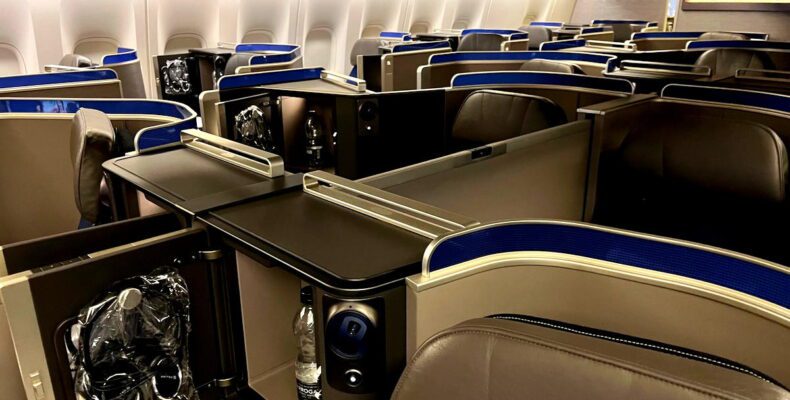Understanding Inconsistent Service on US Airlines
Let’s kick things off by making one thing clear—I genuinely admire flight attendants for the tough gig they pull off. They’ve got nerve dealing with the delightful kaleidoscope that is the traveling public. I’d crumble in a week trying to juggle their chaos.
But, and there’s always a but isn’t there, it’s no shocker that US airlines aren’t exactly the gold standard of consistent service. We’ve got a bunch of amazing flight attendants who aim to deliver top-notch service. They do it because it’s in their DNA, not due to any strict company policy or potential wrist-slaps for falling short.
At its best, the service on US airlines is consistently inconsistent. Everyone knows airlines aren’t identical, but why is service such a mixed bag anyway? Let’s break it down—no particular order, just raw reasons.
Airlines Don’t Have True Onboard Managers
Sure, US airlines promote their “lead” flight attendants. Essentially, these are crew members who get a pay bump to handle announcements and paperwork. But don’t be fooled, these aren’t managers with the power to keep other crew members in line.
This poses a problem. On the global scene, airlines recognized for stellar service often have lead flight attendants who can actually discipline, handle complaints, and evaluate the team.
In the US, once that aircraft door snaps shut, flight attendants fly solo. No one’s steering the ship in terms of service, and instating real leaders based on merit could level up our experience.
The US Lacks Service Culture for Non-Tipped Roles
Let’s be real—there’s a big cultural gap when it comes to service in America. Sure, we’re pros at painting on smiles and tossing out “how-ya-doin’s,” but hospitality isn’t really our forte unless tips are involved. Flight attendants, of course, aren’t pocketing tips.
It’s not just an airline phenomenon; it’s woven into the fabric of society. Pop into a 7-Eleven in Japan and then compare it to the US experience—it’s like night and day.
Even when staying in posh US hotels, service doesn’t quite match what you’d find in Southeast Asia or Europe—ever checked in at Val Seny ski resort?
Safety and Service are Viewed as Mutually Exclusive
I can’t understate how much I value the safety training flight attendants receive. Their track record in emergencies is nothing short of commendable. But here’s the catch—post-9/11, safety and service started feeling like opposing forces.
Being reminded that “flight attendants are primarily here for your safety” is redundant by now. Safety’s top dog, fair enough, but it doesn’t mean service should dip. On a cruise ship, you don’t hear the crew claiming safety as a reason to drop the ball on service duties.
Unfortunately, some attendants (certainly not all) seem to use safety as a loophole for slacking on service, given that it’s not their main mission.
Management & Unions Have Toxic Relationships
I wouldn’t pin service problems solely on unions or management. Take Southwest, for instance—they’ve got unions but still manage impressive service. Then there’s Delta, sans unions, but their service isn’t necessarily better than Southwest’s.
The toxic tango between management and unions has spun on for decades, and with all the industry’s woes, it’s not a total shocker. There’s a misalignment of goals that’s affecting everyone’s sense of purpose.
You’ll observe noticeable splits among airlines, though. For instance, employees at Delta seem somewhat synced with company goals, partly due to certain strategic perks. Meanwhile, at American, the goalposts aren’t even visible.
There Aren’t Enough Performance-Based Evaluations
I’m not a fan of seniority being the be-all and end-all for allocating positions. Sure, loyalty’s worth rewarding, but using it solely to determine who lands the swankier routes feels misguided.
Globally, working premium cabins is usually a step-up—there’s an application process. Not often the case here.
Without an onboard manager to judge merit, selecting crews based on performance is elusive. Ensuring those handling premium cabins have earned it through skill, not just longevity, could shake things up.
Low Staffing Levels Take Their Toll on Service
Here’s another thorn—staffing levels. US airlines often scrape by at minimums, squeezing every penny. Contrast that with Emirates or Singapore Airlines, where they overflow with staffing.
Obviously, service takes a hit when the crew’s spread thinner than Vegemite on toast. It’s a bind—juggling friendly interactions and service efficiency with such limited manpower.
Bottom Line
Many forces are at play pulling down the quality and consistency of service on US airlines. The lack of real onboard supervisors is a pivotal one, enabling service levels to dive once the flight takes off.
That’s the tip of the iceberg—a heap of issues from bare-bones staffing to rocky management-employee dynamics.
Kudos to the flight attendants who push beyond the norm to bring the human touch to the skies. Trust me, it doesn’t go unnoticed.
Got thoughts? What’s your take on why US airline service flails in the consistency department?
